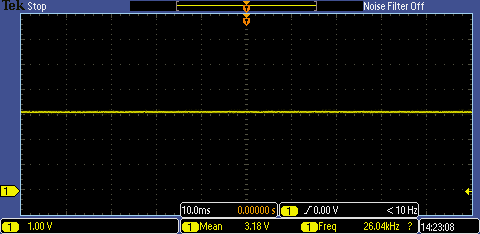4W LED Filament Classic Review
General Information
| ID | #327 |
|---|---|
| SKU | 1000617 GLS - 9348641000654 |
| Series | N/A |
| Manufacturer | Mirabella (other LEDs from Mirabella) |
| Fitting Type | B22 (other B22 LEDs) |
| Light Type | Globe |
| Height | 115mm |
| Width | 60mm |
| Weight | 36g |
| Warranty | 1 Years |
| Test Date | 2015-01-02 |
| Review Notes | Only the second filament LED bulb we have tested. The other one being the LEDisong. Excellent efficiency. Recommended by the manufacturer as a replacement for 25W incandescent bulbs, but it performs nearly as good as a 40W globe. Like many non frosted globes the output is a bit lopsided, with very little light output directly under the globe. No flicker, which is nice, but no dimming and only a 1 year warranty. Carries RCM approval marking. Maybe ominously, the manufacturer makes no claims as to the expected lifetime. We are making a pessimistic guess of 5000 hours. |
| Price | $20 (AUD) from Coles on 4th of January 2015 |
| Rating |      |
|---|
LED Specifications
| Claimed | Measured |
Compared To |
|
|---|---|---|---|
| Watts | 4W | 3.9W @ 241V | 64.7W @ 246V |
| Yearly Running Cost[?] | $0.88 | $0.85 | $14.17 |
| Lumens | 420 lm | 417 lm | 811 lm |
| Efficiency[?] | 105 lm/W | 107 lm/W | 13 lm/W |
| Lumens/Purchase Price | 21 lm/$ | 21 lm/$ | 406 lm/$ |
| Power Factor[?] | N/A | 0.55 | 1 |
| Color [?] | Warm White, 2700K | Warm White, 2854K | Warm White, 2711K |
| Angle[?] | Omni-Directional | 286° | Omni-Directional |
| Dimmable | Not Dimmable | N/A | Yes, Trailing Edge |
| CRI (Color Accuracy)[?] | N/A | 82 | |
| Life | 5,000 hours | Not Measured | 1,000 hours |
| Min/Max Voltage | N/A / 240V | 240V / 240V | |
| Min/Max Temperature | N/A / N/A | N/A | |
| Measured Temperature | 43°C @ 25°C ambient 109°F @ 77°F ambient |
158°C @ 25°C ambient 316°F @ 77°F ambient |
|
| Flicker Percent[?] | 1% | 11% | |
| Flicker Index[?] | 0.002 | 0.034 |
Link to manufacturer specifications at time of testing
Advertisement
Distribution Graph
Angle: 286° (±143° from bottom), Maximum lux:
Graph notes: Shows the intensity of the light when viewed from different angles. Normal omni-directional globes have a fairly constant output all the way around (excepting directly above). Downlights have a narrow range at the bottom in which the light is emmited, this determines their angle.
Spectrum Graph

Graph notes: Shows the breakdown of the LED light into its component colors. With short wavelength ultraviolet on the left and long wavelength infrared on the right. The green line represents the relative absolute strength of the light at each frequency, while the red line represents what the typical human eye would see. The human eye is most sensitive to green light, but much less sensitive to purples and deep reds.
Flicker Graph

Percent: 1%, Index: 0.002 (lower is better in both cases)
Graph notes: Shows variation in light output over 1/10th of a second, with relative light output on the Y axis and time on the X Axis. Measured with a photodiode connected to an Oscilloscope. Ideally the yellow line should be flat. Low frequency high amplitude waveforms mean there is a possibility of noticeable flicker, but sensitivity to flicker varies between people. [More details about LED flicker]
Disclaimer: While every effort has been made to ensure the accuracy of these results, each measurement carries an inherent degree of uncertainty and error. Safety and EMC compliance of products to regional or international standards have not been verified unless noted as an ENERGY STAR® LED Lighting Facts, or SSL Quality Scheme certified product. Retailers and importers selling unmarked or unapproved electrical goods can be fined or imprisoned. Mains supplied downlights require installation by a licensed electrician.